The Silk Road
The Silk Road
The Silk Road
The Silk Road is a world-famous trade route that stretches from China through Anatolia and the Mediterranean to Europe. The exact length is unknown, but it is estimated to be about 10,000 kilometers. Many goods were transported along the way, including silk, porcelain, paper, spices, and precious stones. It's also a way for cultures, audiences, ideas, and information to be exchanged across continents. The Silk Road was not only the path of merchants, but also of sages, armies, and adventurers.
The First Lights of the Silk Road
The history of the Silk Road dates back to 130 BC. Sometimes we're in the Han Dynasty of China. Emperor Wu Di of China wants to establish relations with the Roman Empire. But there's a very big obstacle in between: the steppes of Central Asia. The Turks who live in these valleys are both very warlike and very expensive versions of taxes. He chooses a man in Zhang Qian's hands as Wu Di's ambassador. Zhang Qian has been traveling around Central Asia for 13 years. He has a lot of adventures. Sometimes he manages to fall and escape. Although he didn't make it to Rome in the end, he says he went back to China and saw what he saw. Wu Di is very pleased and sends Zhang Qian back. This time he's going with more men and seeing more land, making deals, and thanks to Zhang Qian's travels, there's a trade route between China and Central Asia.
The Silk Road thus established was actively used until the conquest of Istanbul and the development of maritime technology at the end of the 15th century, when Portuguese sailors began to prefer the cheaper and faster Indian sea routes. At the end of the century, with the conquest of Istanbul and the development of maritime technology, Portuguese sailors began to prefer the cheaper and faster Indian sea routes.
Step by step on the Silk Road
The Silk Road has no definite beginning or end. Different routes were used at different times. But the generally accepted main line is this: the caravans depart from Xi'an, China, and arrive in Kashgar, Uzbekistan. They split in two here. One group reaches the Caspian Sea through the plains of Afghanistan, while the other group crosses the Karakoram Mountains to reach Anatolia via Iran. After Anatolia, they go to Europe by sea through Mediterranean or Black Sea ports, or by land through Thrace. The main stops on this road are: Xi'an (the capital of China), Dunhuang (the gateway to the desert), Kashgar (the center of Central Asia), Samarkand (the pearl of Turkey), Bukhara (the city of scholars), Merv (the city of oasis), Rey (the cultural capital of Iran), Baghdad (the city of the golden age of the Arabs), Aleppo (the trade center of Syria) and Antakya (the gateway to the Mediterranean).
Which cities in Turkey does the Silk Road pass through?
Where did people stay on this trip?
Where did the people stay on this journey? In caravanserais, of course! Caravanserais were large structures that provided a safe shelter for the travelers. Here they could look after their horses, eat, rest, and converse with other passengers. Some of the caravanserais were very luxurious. For example, there was even a bath at Alara Kervansaray, built by the Seljuk Sultan Alaeddin Keykubat! Many of the buildings built along this road still offer historical and cultural richness today. For example, works such as the Id Kah Mosque in Kashgar, Registan Square in Samarkand, Kalyan Minaret in Bukhara, Sultan Sanjar Tomb in Merv, Emevi Mosque in Damascus, Hagia Sophia in Istanbul show the architectural heritage of the Silk Road.
The hope that doesn't come out of the soul is unbreakable.
Unfortunately, no, there were many dangers along the way: bandits, animals, desert storms, diseases... The caravans hired armed guards or local guides to protect them from dangers such as bandits, animals, or natural disasters. They might also sometimes have to pay taxes or tribute from the governments along the way. In addition, climatic conditions could make travel difficult. For example, to cross the Karakurum Mountains, cold-resistant clothing was needed.
Does the Silk Road Have a Belly Name?
It is disputed whether the Silk Road was called by this name at that time, but some believe that the name was first used by the German geographer Ferdinand von Richthofen in 1877. Many say that this road has long been known as the Silk Road. Because it was the main route from China to Europe for the transport of silk. Silk was China's most important export, and Westerners loved it. So much so that the Romans considered silk to be the equivalent of gold. In fact, according to the Romans, silk was derived from a mysterious plant that grew only in China. Of course, we know today that this is not true.
The caravan is on its way.
If you ask what else was transported along this road besides silk cloth, the answer is very varied. For example, many valuable goods, such as spices, porcelain, paper, jewelry, gold, silver, bronze, glass, and carpentry, passed through this road. Cultural elements such as philosophy, religion, and art also spread along the way. For example, Buddhism, Zoroastrianism, Manichaeism, Christianity, Islam were spread in this way. This is how inventions like paper, compass, gunpowder came into the hands of Westerners.
The Silk Road was used very actively. Especially in the Middle Ages, trade caravans came and went this way. These caravans sometimes numbered in the thousands. These caravans were usually led by merchants, but sometimes they were also accompanied by messengers or observers. For example, the famous Venetian traveler Marco Polo followed the Silk Road to China in the 13th century and stayed there for 17 years. In the 19th century, he followed the Silk Road to China and stayed there for 17 years.
The Silk Road was a very long road and it was not easy to cover the distance of thousands of kilometers. On average, a caravan took about one to two years to travel from China to Europe. Of course, during that time, it could vary depending on the season, the health of the animals, and the security breaches.

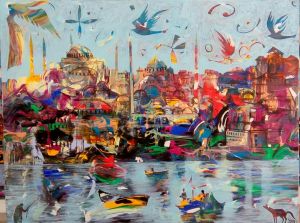
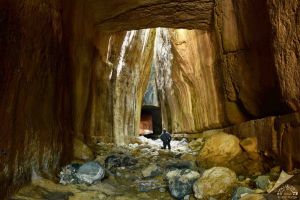
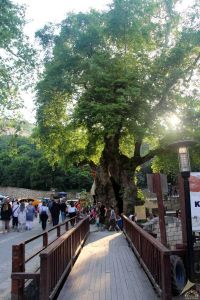
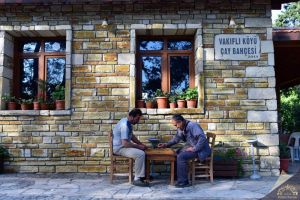

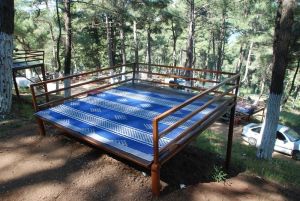
Değerlendirmeler